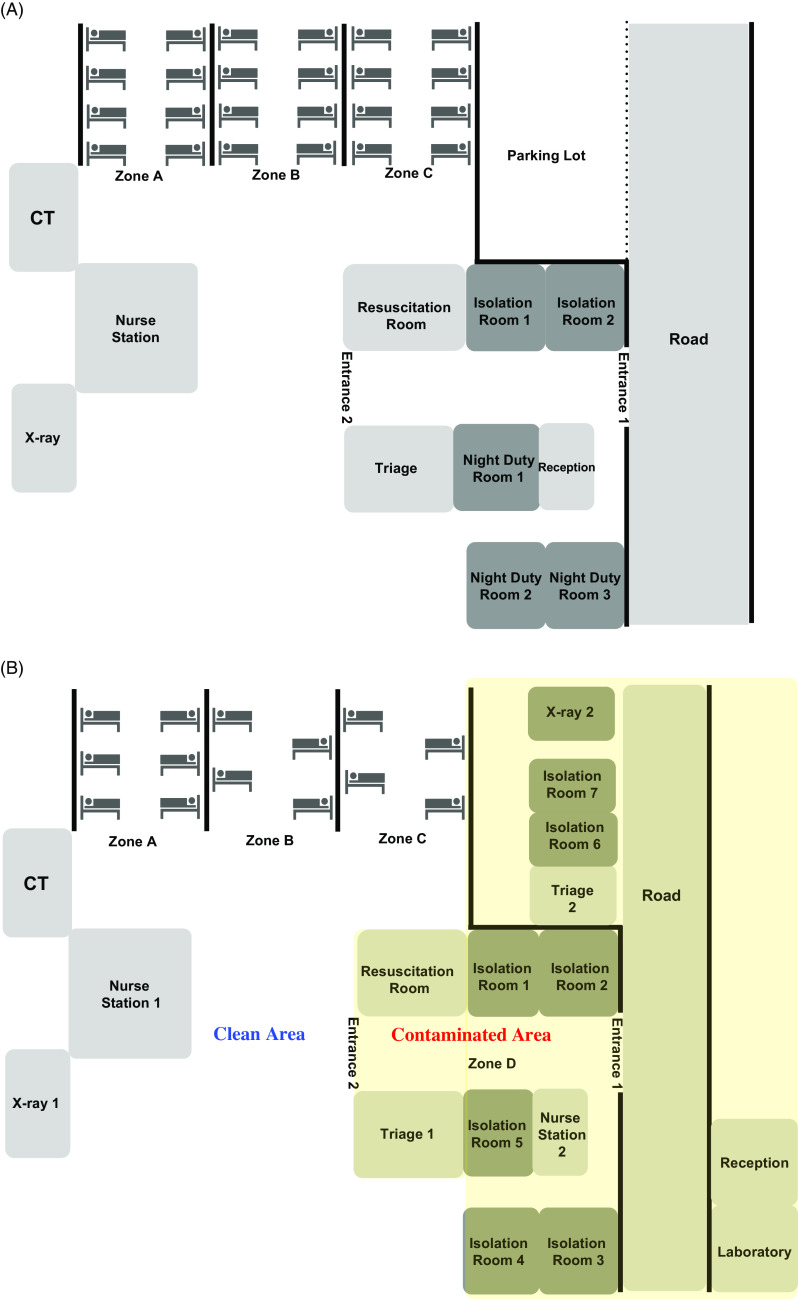Fig. 2.
Schematic illustrations of the emergency room structure changes between the pre-shutdown period and the post-shutdown period. (A) The structure of the emergency room (ER) in the pre-shutdown period. Before ER shutdown, there were 24 beds in 3 zones (A, B and C) and 2 nonairborne infection isolation rooms between entrance 1 and entrance 2. The 16 beds for adult patients were divided into zone A and B according to the severity of illness, and zone C contained 8 beds for children. The interbed distance was 1.5 m. (B) The structure of ER in the post-shutdown period. After the ER shutdown, we designated the clean area (blue letters) and the contaminated area (red letters) separated by entrance 2. We set up a triage including a reception area, a laboratory, a chest x-ray area, and a resuscitation room (isolation room 6 or 7) outside the ER using intermodal containers. We built airborne infection prevention systems in the isolation rooms 1, 2, 3, 4, 6 and 7 and x-ray 2 and laboratory rooms using mobile negative-air machines. We reduced the number of beds in zones A, B, and C to 14 and widened the interbed distance to 2 m. High-resolution closed-circuit televisions and portable patient monitors were installed in all of the isolation rooms to monitor vital signs, level of consciousness, and patient movement.

